


























esign — be it graphic, landscape, architectural, interior or any number of o shoots — plays a major role in how we perceive the world around us. Richmond is home to an ever-growing design community whose members add to the beauty, e ciency and practicality of the homes we build and the places we frequent. In this issue, we’re looking through that filter into the private worlds designers have created for themselves. Interior design is about creating an environment in your home or o ce that reflects you: your ideas, your aesthetic and the things you love. Expressing yourself in your spaces is a concept everyone we talked with in the pages ahead has embraced.

Christian Siriano launched his eponymous design house on Seventh Avenue in New York City in 2008, building an international reputation for his showstopping couture fashion collections. The “new king of old-school glamour,” as he was dubbed by Elle magazine, is into interior decorating, too, and he welcomed R•Home into the house he recently designed for his mother on Richmond’s Monument Avenue (Page 46).
A sad, 1970s-era home on the shores of Lake Cherokee caught the attention of Richmond interior decorator Jennifer Stoner and her husband during the pandemic. The midcentury split-level, which had great potential and a perfect location on the water, now has a groovy new outlook (Page 38).

You might say that the interiors of Rob Stephens and interior decorator Stevie McFadden’s Dutch Colonial in Bon Air (Page 32) are a little yours, mine and ours. He’s a modernist and she’s more of a maximalist, but together they’ve created a new aesthetic for their blended family.
Also in this issue, we visit a dress designer’s Park Avenue flat (Page 18); an investment o ce with midcentury panache in Scott’s Addition (Page 66); and Azurest South, the home and workspace groundbreaking architect Amaza Lee Meredith designed in 1938 (Page 24).
CHEERS TO A DESIGN-FILLED 2025!
Find us at R•Home magazine on Facebook and @rhomemag on Instagram.


CHECK OUT R•HOME ON CBS 6 DURING ‘ VIRGINIA THIS MORNING’!
Tune in for our home and garden tips on the following Wednesdays: Jan. 15, Feb. 12 and Feb. 26.

ONLINE, ALL THE TIME
Find beautiful photos of local homes, expert design tips and advice, and much more at rhomemag.com.





By Kim Catley
Rebecca Robinson spent decades attending galas and formal events. She lived in Munich for 11 years with her husband, a television producer, and regularly joined him at the Grammys and international film awards. After her husband’s death in 2003, Robinson moved back home to Virginia and focused her attention on her toddler son. A decade later, however, the pair moved to Palm Beach, Florida, looking for a fresh start, and Robinson began attending a stream of charity events and galas.
Along the way, she developed a strong sense of personal style — and the slinky dresses she saw hanging in Neiman Marcus and Saks did not fit the bill.
So, Robinson started designing her own gowns and cocktail dresses.
“I much prefer the classic, elegant ’50s style,” she says. “I wanted to enhance the shoulders, back and legs — the other beautiful parts of a woman’s body.”
In addition to vintage silhouettes, she uses bold colors and patterns, luxury fabrics from Milan and Paris, and handmade feather and beading trim from Dubai in the United Arab Emirates. She also isn’t afraid to mix couture with fast-fashion accents.
Fellow gala attendees raved about her dresses, and Robinson soon launched a design business. She held fashion shows on Worth Avenue in Palm Beach, and designer Jimmy Choo hosted her collections in his stores.
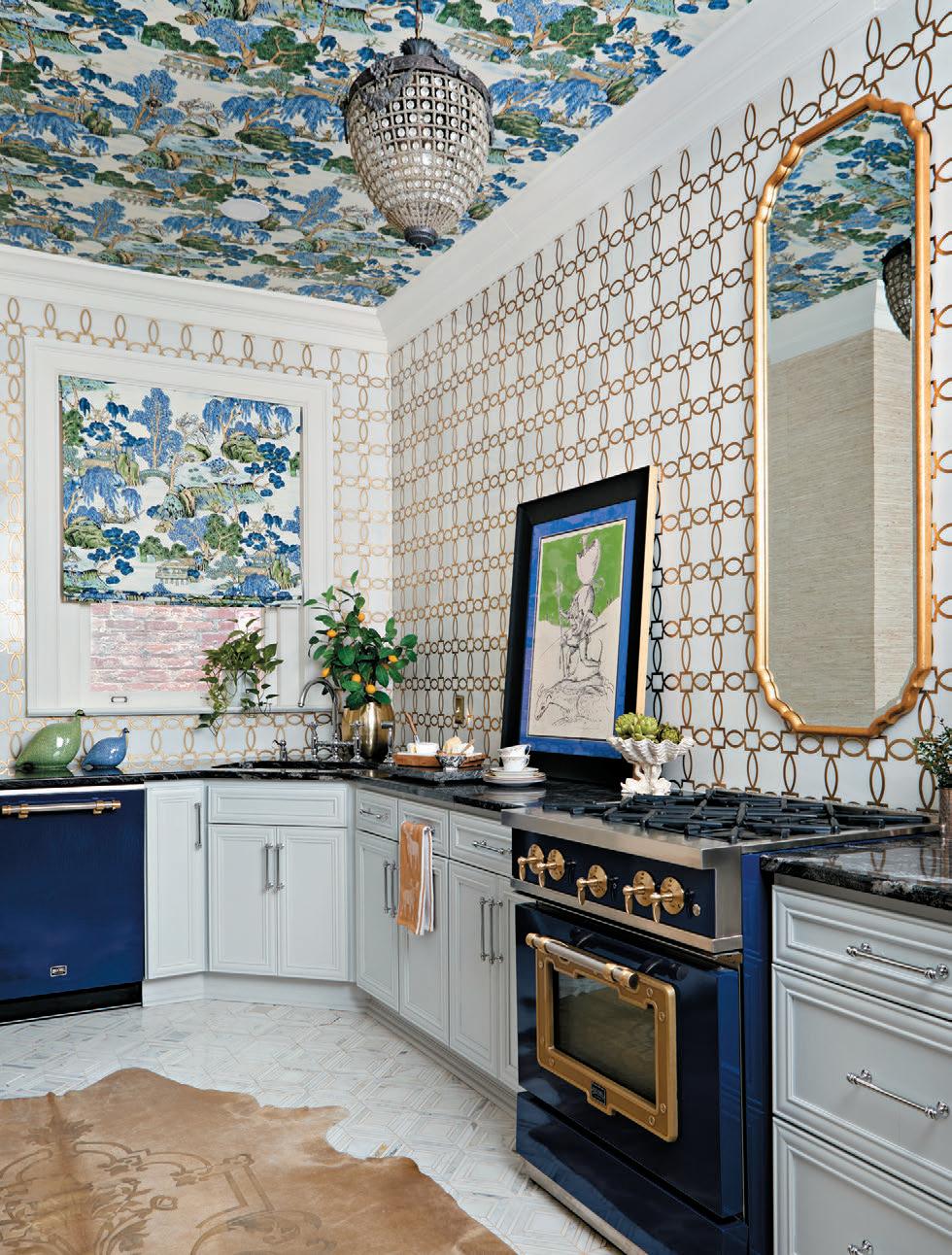
Then the pandemic hit, and the galas stopped. Robinson decided to buy a second-story walkup in her hometown of Richmond and split her time between Virginia and Florida.
Her Fan District condo became her next creative outlet. Just like her fashion aesthetic, she blends bright colors and metallics with rich textures and a mix of high and low accents.
Robinson says she traded her fabric samples for wallpapers and spent months researching thousands of possibilities until she found herself repeatedly drawn to particular patterns. A lush green crocodile print lines the walls of her walk-in closet. In her o ce, she paired John Paul Gaultier’s tattooinspired designs with an antique book print. The ceiling of her living room
features a flurry of colorful butterflies and dragonflies set against metallic gold — a pattern from Christian Lacroix.
“We were so trapped during COVID, and that butterfly wallpaper made me feel so free,” she says.
Throughout the condo, Robinson has curated collections of art and objects that remind her of various people and places. A photo of Robinson and her brother Joey sits atop an early edition of Jack Kerouac’s “On the Road,” while a painting of a young skateboarder hangs on the wall above it. Both remind her of her late brother.
Nearby are paintings by Keith Haring and Salvador Dalí (a favorite of Robinson’s late husband), first-edition books by Winston Churchill, and Biedermeier chairs, a hot pink French
bulldog from Home Goods and her own abstract artwork.
Some pieces nod to the places Robinson once called home. After living next door to The Colony Hotel in Palm Beach and earning the nickname “the neighbor,” Robinson couldn’t resist a watercolor painting of the pastel pink building. Two abstract paintings by German artist Peter Zimmermann, made with layers of amorphous glassy epoxy, fill the walls of her dining room. Robinson discovered the artist in Munich.
“I kept my most meaningful treasures, and a lot of it is emotional,” she says. “My condo reflects my life.”


KITCHEN
Robinson gutted the kitchen, retaining only the cobalt blue appliances, which she loved. The wall is clad in marble and brass tile. A pair of Guinea Hens from Creme de la Creme inspired the blue and green color scheme. The wallpaper and roman shade fabric are Scalamandre.
BEDROOM
A neutral palette and natureinspired prints create an oasis of calm. The vintage Hollywood Regency style chair is one of a pair that Robinson had recovered. The wallpaper and fabrics were sourced through Kim Garrod Designs.
A mannequin displays one of Robinson’s dress designs, meant to be worn to ladies' luncheons, tea parties or polo matches, and always with a hat. The closet cabinetry is from California Closets.
Kick off 2025 with new home ideas, artisan markets, workshops and intriguing museum exhibitions By
Evan A. Morgan

Through Jan. 5 Dominion Energy GardenFest of Lights
Hold on to the magic of the holidays by basking in the enchanting glow of millions of lights illuminating Lewis Ginter’s magnificent gardens. 1800 Lakeside Ave. Tickets are available online at lewisginter.org.
Jan. 12 Peace, Love & Local Artisan Market
Bring the whole family to enjoy live music and local shopping at this bustling market filled with everything from home decor to vinyl records. Main Line Brewery, 1603 Ownby Lane. Free admission. artisanmakers.org
Through Jan. 26 ‘A Long Arc: Photography and the American South Since 1845’ Take a journey through the last 175 years of the American South, experiencing the region’s people and history through 200 stunning images. Virginia Museum of Fine Arts, 200 N. Arthur Ashe Blvd. Tickets are $12. vmfa.museum
Feb. 9 Galentine’s Day Artisan Market
Celebrating women-owned businesses, the Galentine’s Day Artisan Market o ers a plethora of locally made goods, such as home decor, clothing, jewelry, art and more. Noon to 5 p.m. Hardywood Park Craft Brewery, 2410 Ownby Lane. Free admission. hardywood.com
Feb. 19, 20 Succulent Container Garden Workshop
Cultivate a green thumb while creating a personal succulent container garden with helpful guidance on care and construction from Maymont’s sta . 6 to 8 p.m. Maymont, 1000 Westover Road. Sign up at maymont.org.
Feb. 28-March 2 Richmond Home + Garden Show
A jam-packed weekend complete with live guest appearances from HGTV stars Leslie Davis and Lyndsay Lamb of “Unsellable Houses,” a feature garden, model home, live music from local artists, and myriad home and garden
Learn to make your own containersucculentgarden at a workshop,MaymontFeb. 19 and 20.
vendors. Richmond Raceway Complex. $7. Tickets are available at richmond homeandgarden.com.
Through March 9 ‘ Dear Mazie’ Discover a legend, Amaza Lee Meredith, the first known Black queer female architect in the U.S. A new exhibit at the Institute for Contemporary Art at Virginia Commonwealth University features selections from Meredith’s vast archive alongside a variety of pieces by contemporary artists who found inspiration in her work in the fine arts and architecture. ICA at VCU, 601 W. Broad St. Free. icavcu.org
Through April 20 ‘A Better Life for their Children — Julius Rosenwald, Booker T. Washington, and the 4,978 Schools That Changed America’
Explore the impact of Washington and Rosenwald’s pivotal program, which created thousands of schools for African Americans in the South during Jim Crow, through Andrew Feiler’s photography in conjunction with artifacts and oral histories. Free with admission. Virginia Museum of History & Culture, 428 N. Arthur Ashe Blvd. virginiahistory.org
Through June 23 ‘ Views of Korea: Hasui’s Journey and Japanese Prints’ Transport yourself to Korea via a collection of 12 prints created by Japanese artist Kawase Hasui. They depict the serene temples, regal palaces and lush landscapes he encountered on his travels to the peninsula in 1939. Virginia Museum of Fine Arts, 200 N. Arthur Ashe Blvd. Free. vmfa.museum


The
Branch
Museum considers
the powerful
impact design has on our world. By Joan Tupponce
Each time you choose a writing pen or the clothes you wear or even the route you take to work, you are making a design choice.
“Every design choice we make impacts us individually as well as the community around us,” says Heather Ernst, executive director of The Branch Museum of Architecture and Design.
The museum’s 2024 Re-Think Design series, which wrapped up its first phase in December, encourages people to think outside the norm when it comes to design. The series looks at the power of creation across di erent disciplines, including architecture, urban planning, fashion, industrial and graphic design.
“We have discussions with professional designers about the interplay between science, creativity, aesthetics and functionality,” Ernst says. “We take a deeper look at design and the intentionality behind it. That’s what we want to get people to think about.”
Lectures in the series included the
production of the world’s most iconic logos, urban planning as it relates to the city’s Richmond 300: A Guide for Growth planning document, designing sacred spaces, the ascendancy of apparel and mural creation.
“We want people to think about the way design impacts every experience we have,” Ernst says.
As an example of this concept, The Branch holds its mini-concert series in the museum's Main Gallery, which was designed by John Russell Pope in 1919 with enhanced acoustics for recitals.
“ The bottom line is, everything we use is made with some type of intention,” Ernst says.
The Re-Think Design series was created by The Branch to help bolster attendance. “In less than six months we have doubled our membership,” Ernst says. “The series has resonated with a wide audience.”
In 2025, the museum plans to lengthen the amount of time focused
The Branch House, a Tudor Revival mansion on Monument Avenue, was built for financier John Kerr Branch and his family in 1919.
on each design discipline to allow for deeper conversations. “Each will run for approximately three months,” Ernst says.
The series will kick o with landscape design by looking at landscape artist Charles Gillette and the impact he has had in Richmond and throughout Virginia.
“We will also look at the past and future of landscape design. We will talk about the rich biodiversity of native planting,” Ernst says.
This year’s series will also spotlight lighting design, including light art, lighting to transform a space and lighting products. Another program in the series will explore interior decoration.
“This is an important series because design is important. People want more out of the series,” Ernst says. “We are excited to expand it [in 2025].”



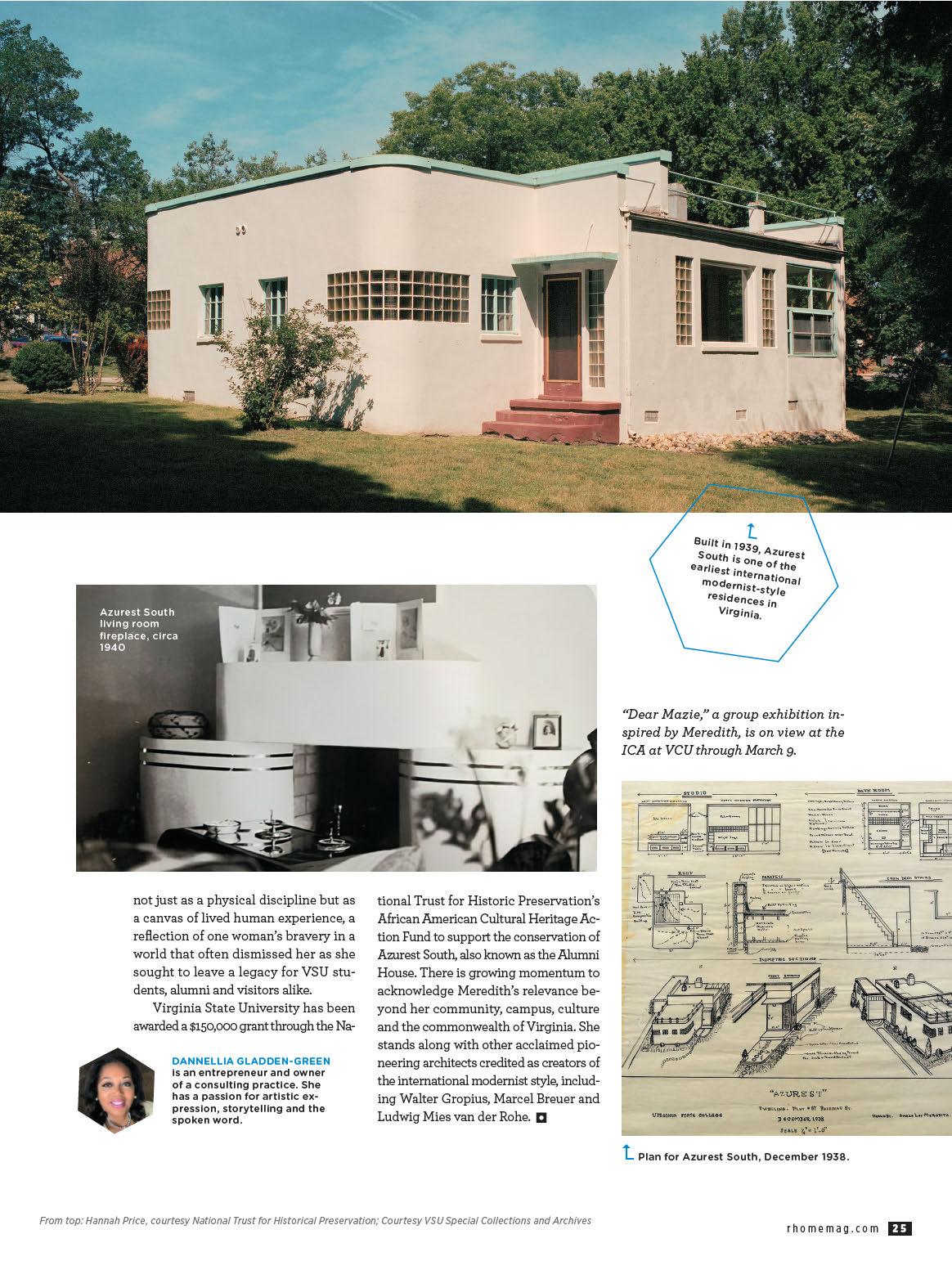
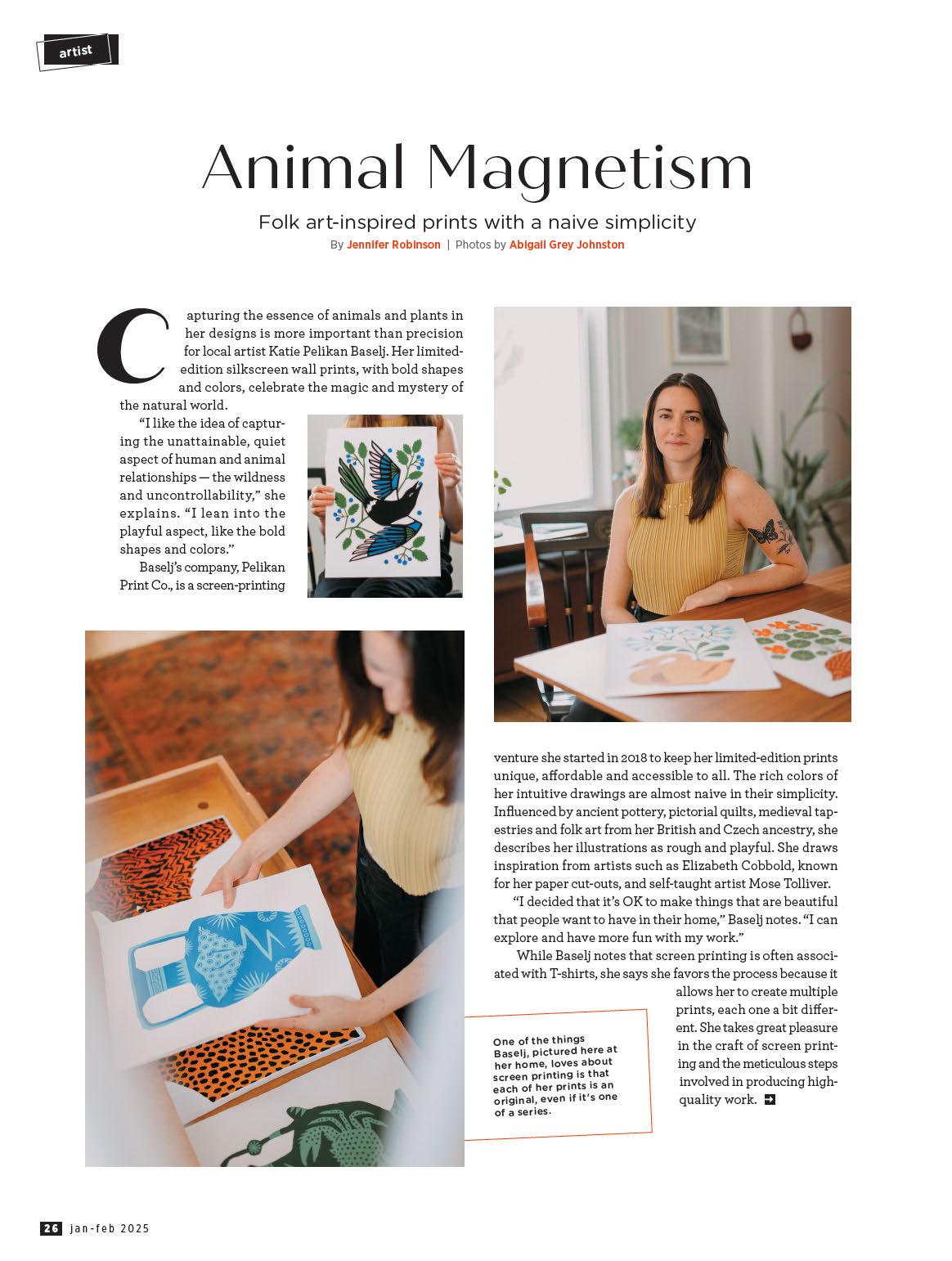
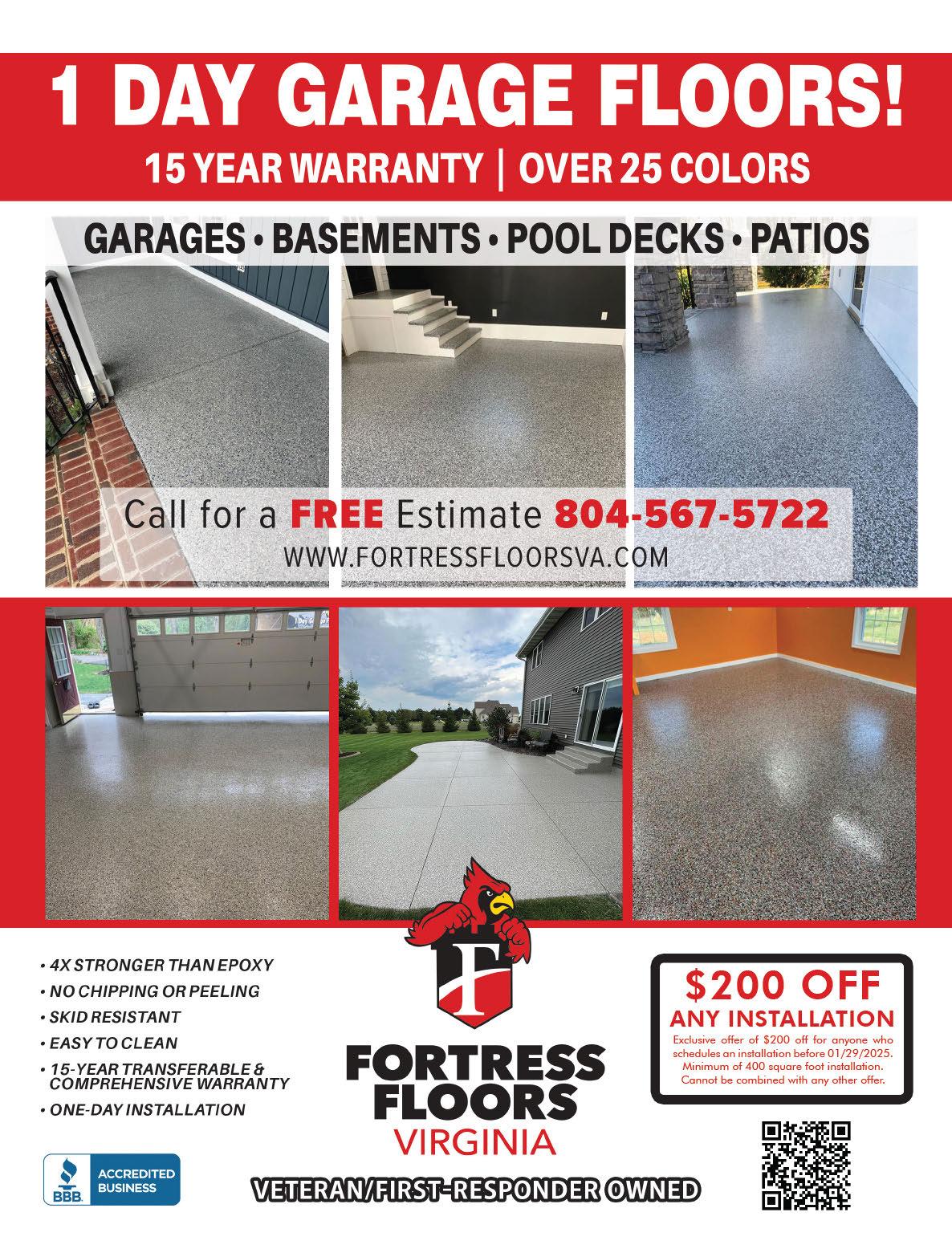

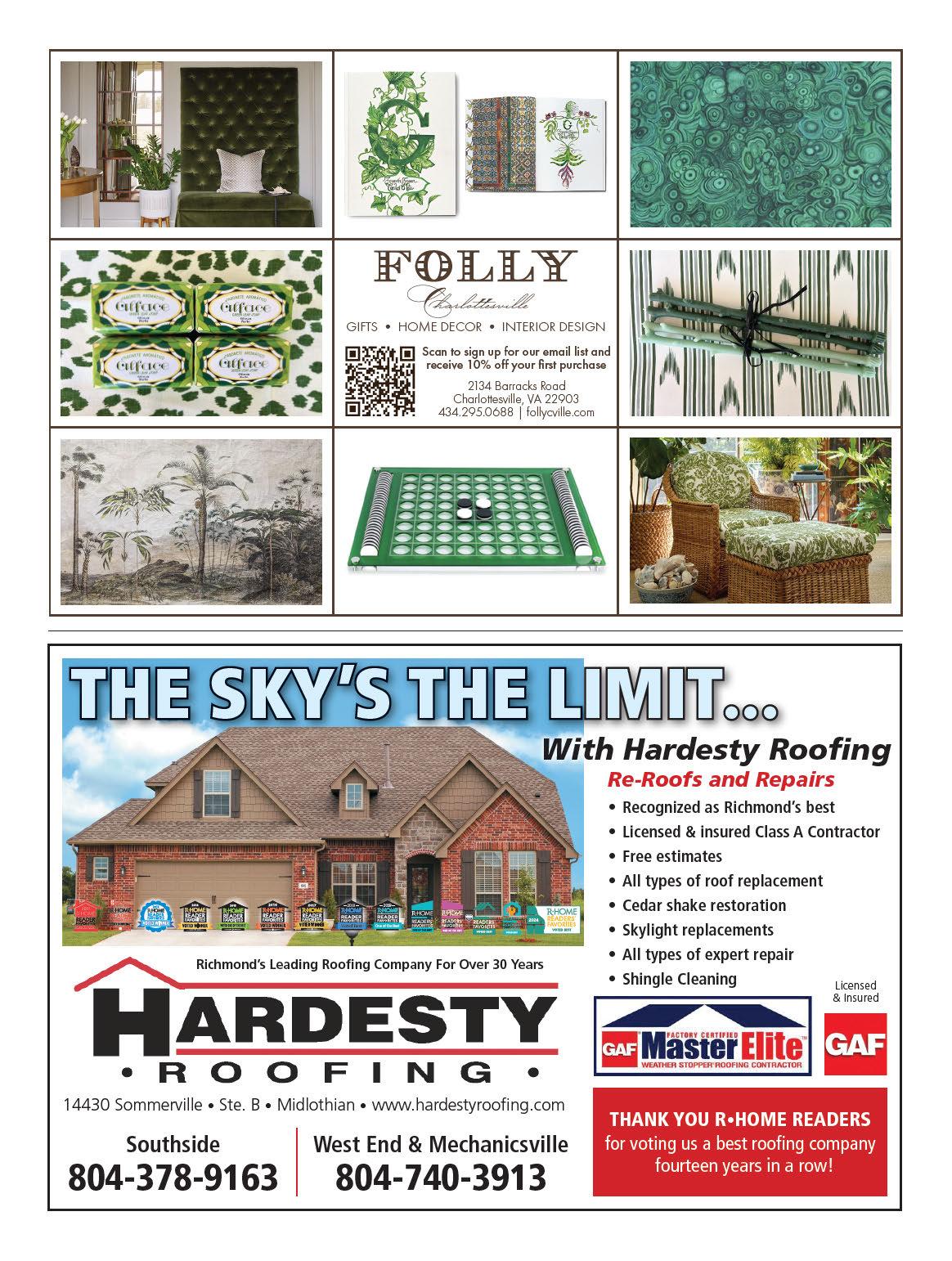
Meet the stars of HGTV’s ‘Unsellable Houses’ at the Richmond Home + Garden Show
By Valerie Hubbard

One has bangs, and one doesn’t. One loves numbers and business negotiations, and one lives for finding creative solutions to home design challenges. Both have loved each other since birth and the work they’ve done together for nearly 15 years. Twins Lyndsay Lamb and Leslie Davis, stars of HGTV’s “Unsellable Houses,” help buyers and sellers transform lifeless homes into desirable gems. The duo are also real estate agents and business owners who believe their superpower is their bond. Their success both on camera and o underscores their assertion that they were made to run their unique, personality-based ventures together.
In advance of their appearances at the Richmond Home + Garden Show on Friday, Feb. 28, and Saturday, March 1, R•Home asked the sisters to share some of the design tips for homebuyers and sellers that have propelled them to be top agents in the Pacific Northwest and the focus of one of HGTV’s most popular shows for five seasons.
R•Home: What is the most important aspect of preparing a house for sale?
Lyndsay Lamb: Staging. That has always been a huge part of what set us apart from day one in real estate. We stage every home with the same intensity, with the same detail, with the same passion,
because we know that staged homes sell for more than vacant homes. Leslie Davis: We had proof of that in our business, and we try to explain to all of our clients that there is a major di erence between living in a home and selling a home. The decor you have to enjoy your home is not the same
as the decor you need to showcase, for example, how big your home is. Buying a home is emotional, and the largest decision and the biggest financial decision you’re going to make, so you need to be able to use all of your senses.
R•Home: Does your staging design remain neutral for all home listings, or does it vary?
Lamb: We really put a lot of e ort into looking at the home before staging. We are not going to take a home that is very midcentury and put cottage- or colonialtype furniture in that home. We want to stay true to the home’s style, because we feel like that is an emotion. A lot of people who are coming to a midcentury home, for instance, are coming because they love those types of properties.
R•Home: Do-it-yourself versus professional help: When is it worth hiring experts?
Lamb: Always go with an expert when it involves electrical, plumbing or structural — anything that you would have to get a
permit for that would really a ect the value of your home if it went wrong. I love the mindset, “How hard could it be?” when it comes to the other stu , though. We don’t mind painting cabinets or trying to do a cement wall; … it can all be repaired or covered up. Stick to those things that aren’t going to burn your house down or flood your home.
R•Home: What are a few of the best things to do before listing a house for sale?
Davis: One of the easiest, most cost-e ective and really impactful things to do is paint. It goes a long way and can really transform a property. Also, hardware like hinges, door handles and handrails can also be a great update for a property at low cost. Change them from matte black to brass or just spray paint the existing hardware. Light fixtures also make a huge di erence. Those are the really easy ones. Lamb: Curb appeal is also really important. Take the time to spruce up the landscape.











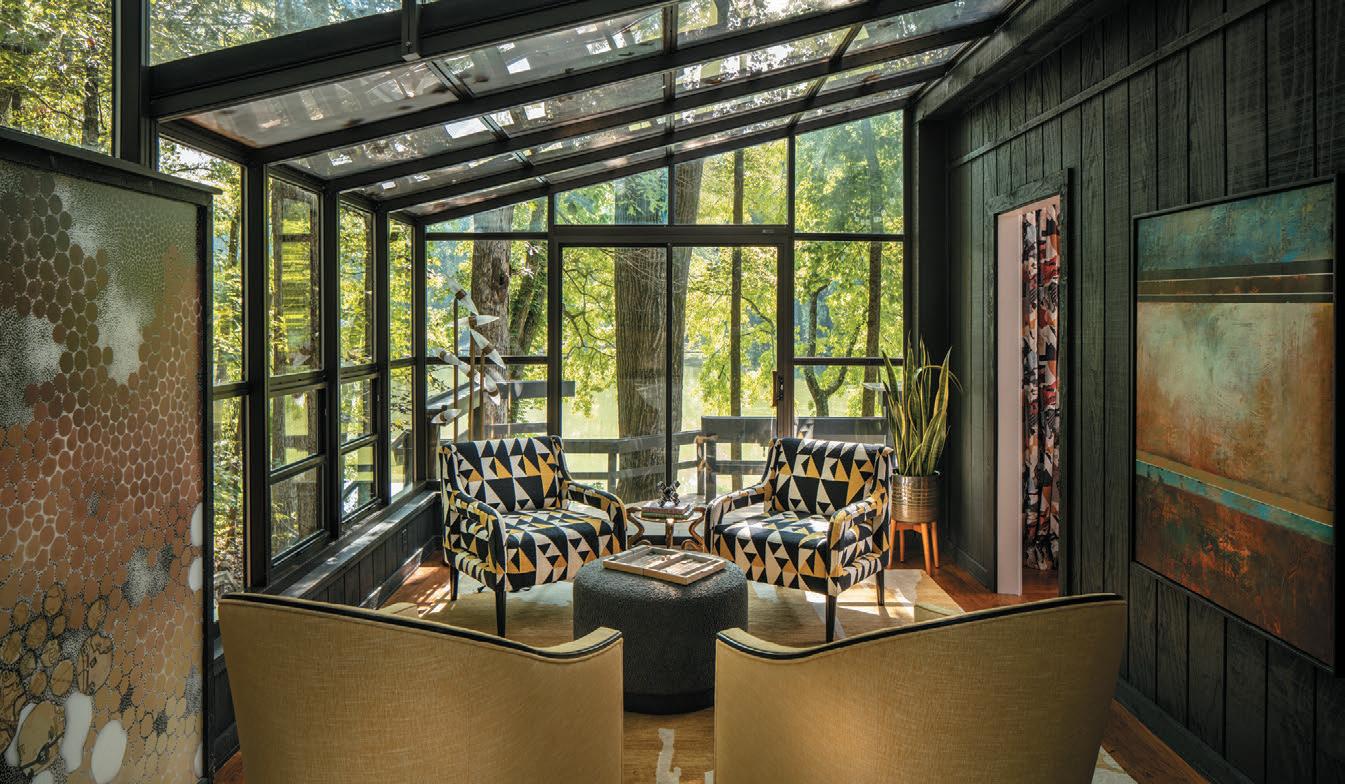


“A home should be personality driven — it should feel like you. ”
—JENNIFER STONER
For the last few decades, she’s focused on her children and her clients, so Jennifer has embraced this time to do something for herself.
“The thing I love most about our house is that it’s comfortable,” she says. “I’m perfectly happy sitting home with my feet up and just enjoying the house.”
Her goal for her clients is to have that same feeling of contentment. “A home should be personality-driven — it should feel like you,” she says.
While modern technology controls the lighting, temperature and window shades, the front deck is a no-phone zone. “Out here, it’s still 1976,” Je rey says. The couple loves hosting parties as well as kayaking and paddleboarding or just taking in the scenery.
They’ve also gotten to know their dozens of neighbors on Lake Cherokee, many of whom are empty nesters like themselves. The neighborhood just held its annual New Year’s Day flotilla, a longtime tradition.
“The great thing about the lake is it looks di erent every day and throughout the day,” Je rey says. “We love to travel, but now when we come back, it feels like the vacation continues.”


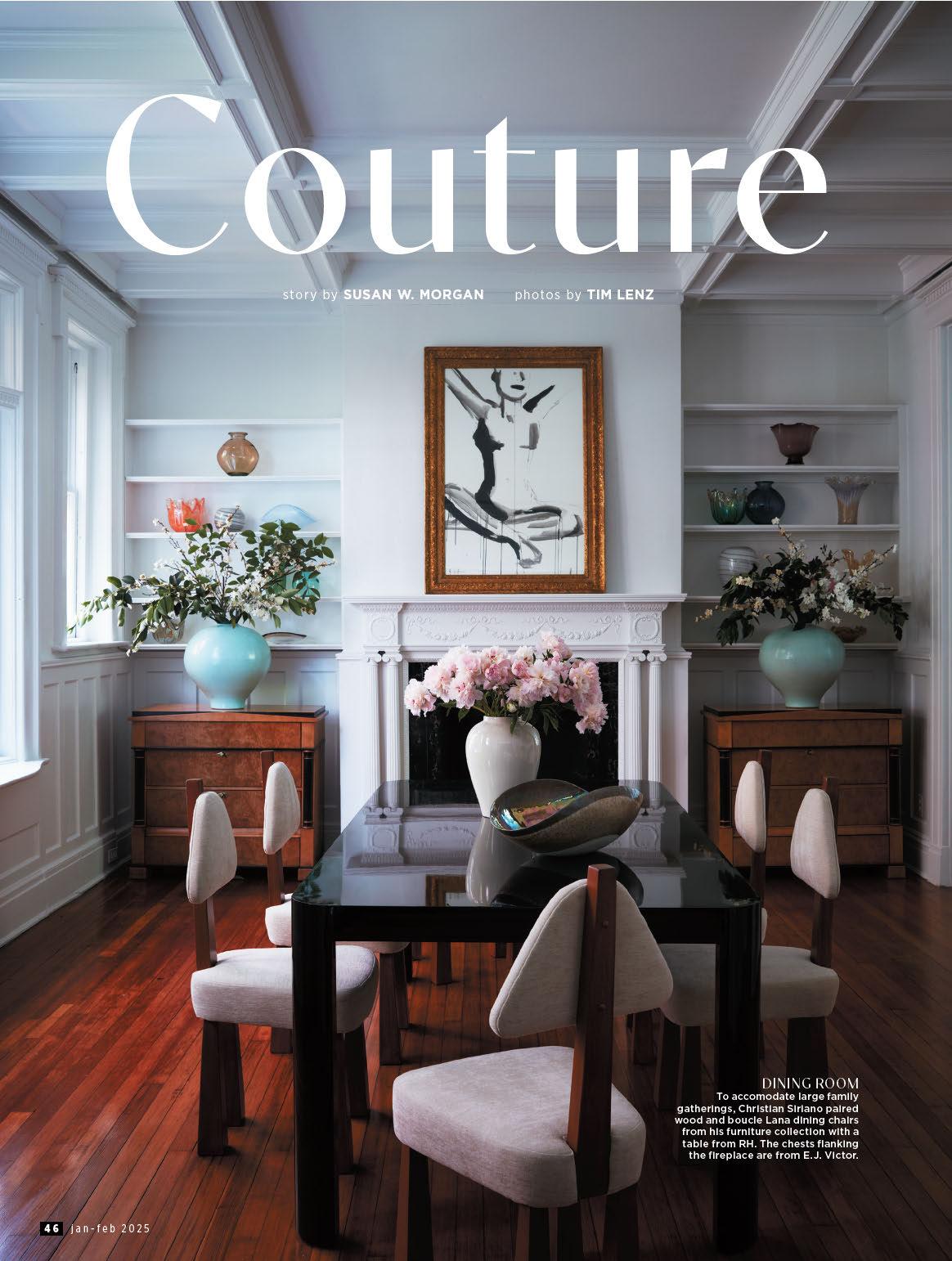
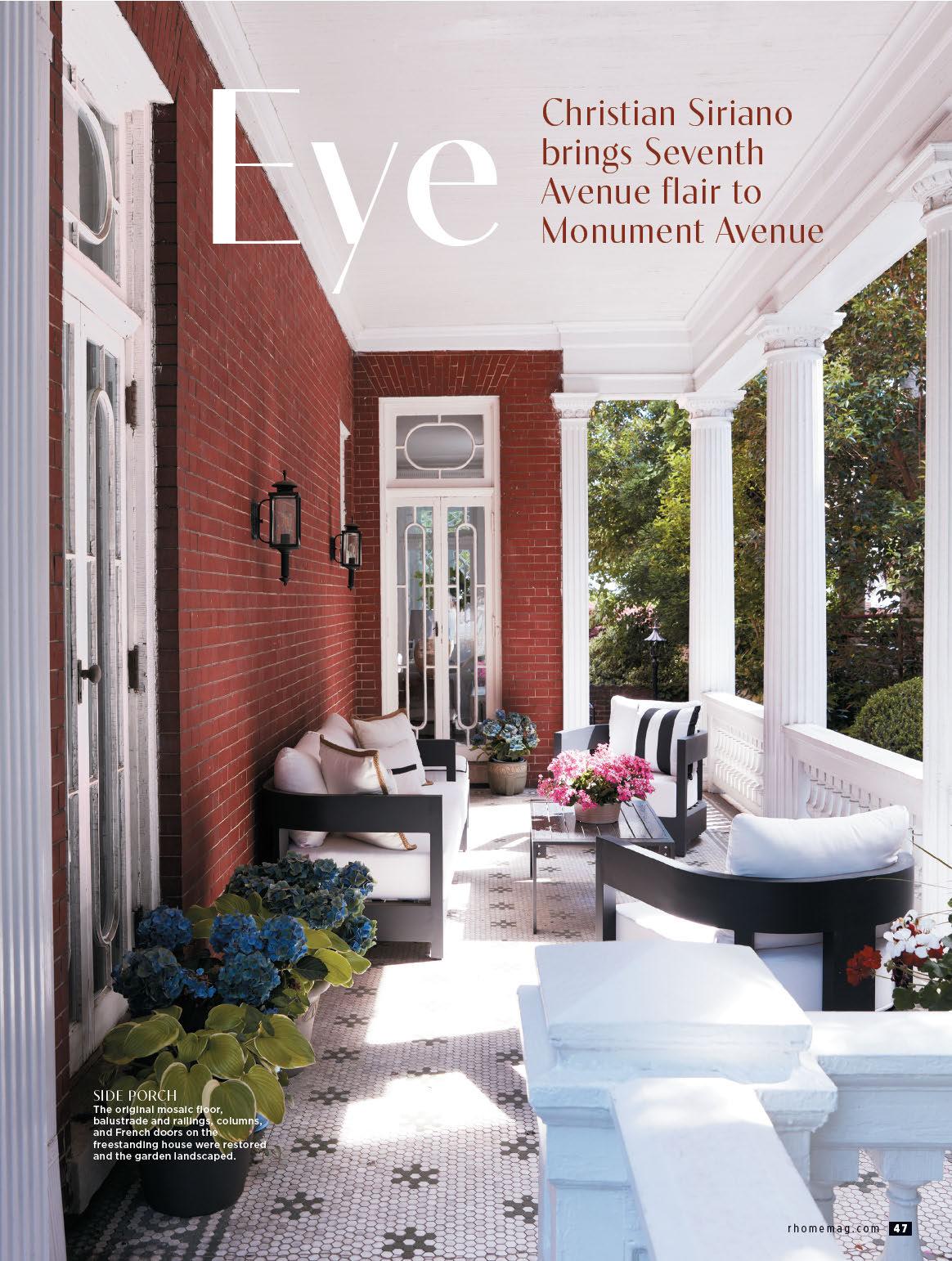

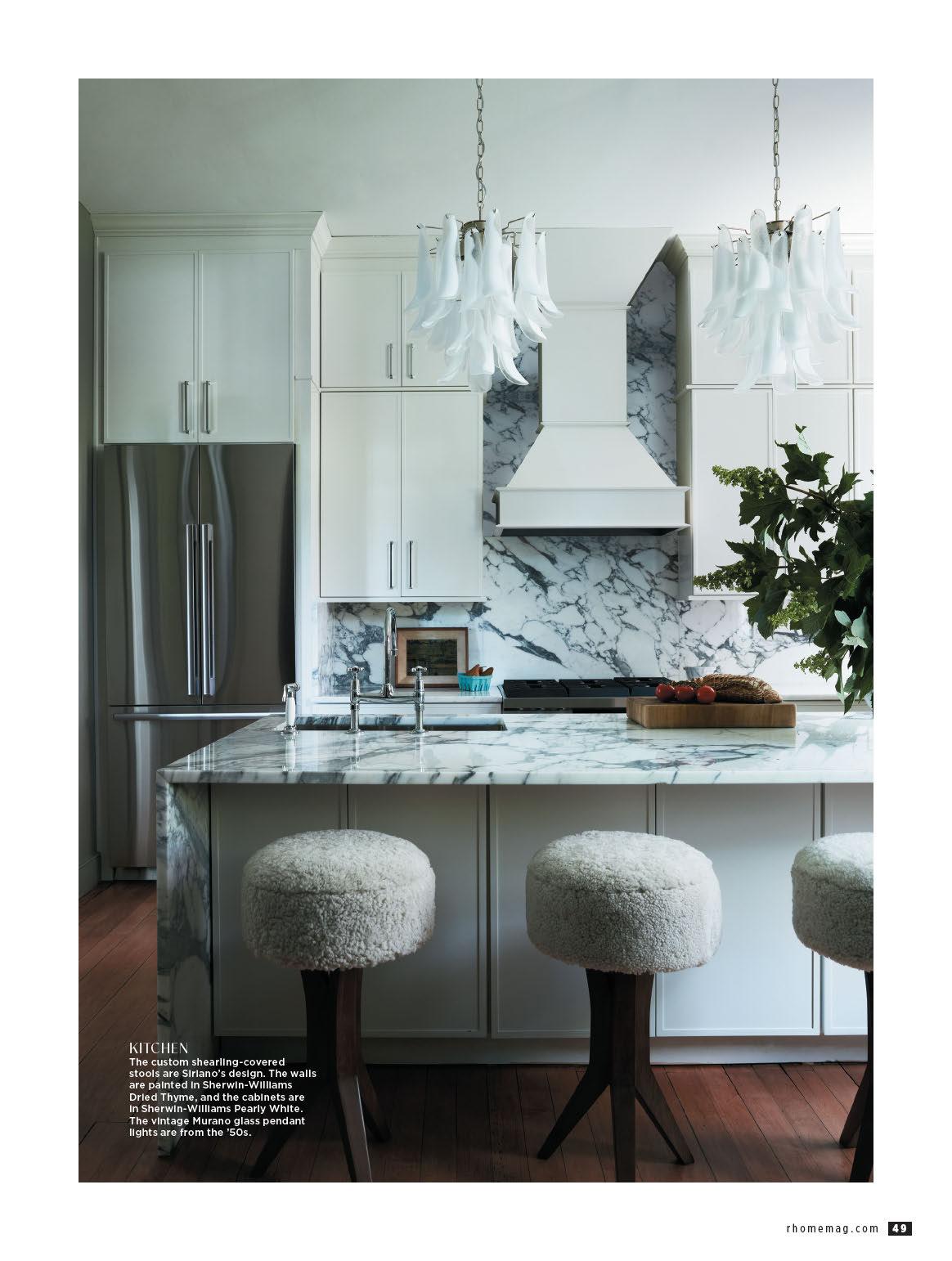

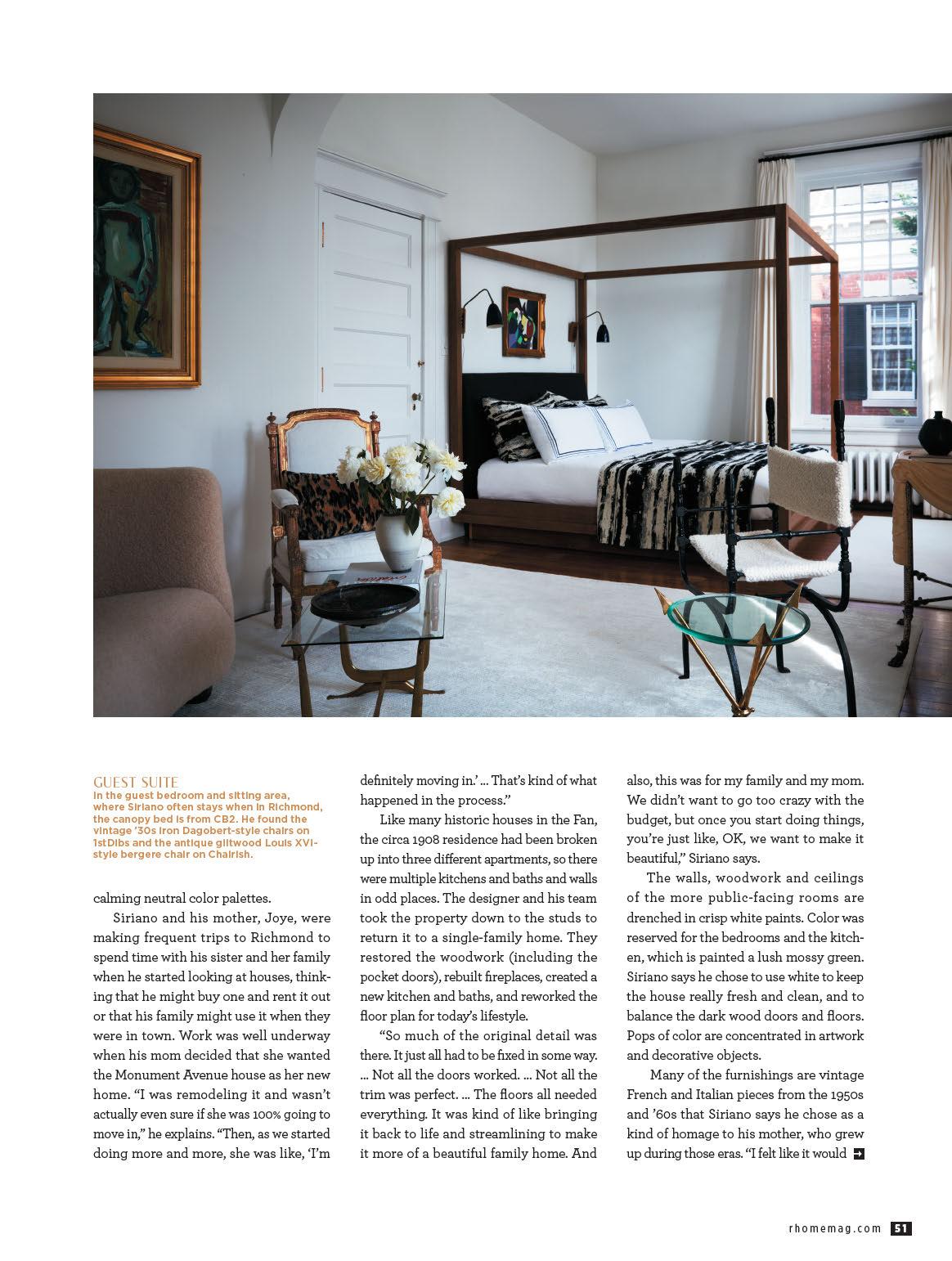

mother’s home. “Oh, my gosh … so many. … You know, we have this daybed ... a [vintage] Johannes Andersen daybed, and I love that piece because it feels really modern and beautiful, but the tufting and the fabric make it feel traditional. I love that balance.”
be cool to have things like that even though it’s not necessarily always been her taste. … I remember putting in the daybed, and she was like, ‘Oh, my God, I remember daybeds like that growing up. I would see them in people’s homes.’
“So, it was nice to have that, in a way, and also, I wanted the house to not feel too traditional because that’s just not really my design style. It was important to make sure that it still felt very modern and cool and new, because anybody could come in and make that house feel very traditional. We wanted it to feel a bit di erent from what else is around the block.”
Siriano says it’s hard to pick a favorite piece from the collection he curated for his
Other favorites include a vintage boucle Jean Royere Oeuf chair and the Murano glass pendants in the kitchen.
“I also just love, in the living room, I gave her these beautiful sofas that were designed by a great designer, my friend Jake Arnold, for Crate & Barrel. They’re skirted, and they feel a little bit more feminine,” he says.
Subtle details throughout the house reflect Siriano’s discerning eye and the dressmaking talent he shares with his mother. In the kitchen, a dramatic range hood, which mimics the form of a cinchedwaist mannequin; delicate Murano glass pendant lights; and custom shearling-covered stools add softness to the marble surfaces. “I think that they give a little of that,
again, feminine glamour that we wanted and make it feel really beautiful. Because the stone was quite harsh and cold, and it’s about creating different shapes and lines,” he says.
“I think there’s a little bit of that everywhere,” Siriano continues. “Even from, again, those sofas having those beautiful box pleats. And a lot of the fabrics … we used a lot of beautiful cashmere mohairs, linens. We used some beautiful silks upstairs, and so I think everything has a little hint to why I love making clothes; my mom made a lot of clothes. So, I think that that is there without it even [being planned] … it just happens naturally.
“I wanted my mom to come home to something kind of tranquil,” Siriano adds. “The light in that house is amazing. It just feels so bright and fresh. She’s loving it. My sister loves it. Her boys love it. The whole family uses it all the time. It’s perfect for her.”

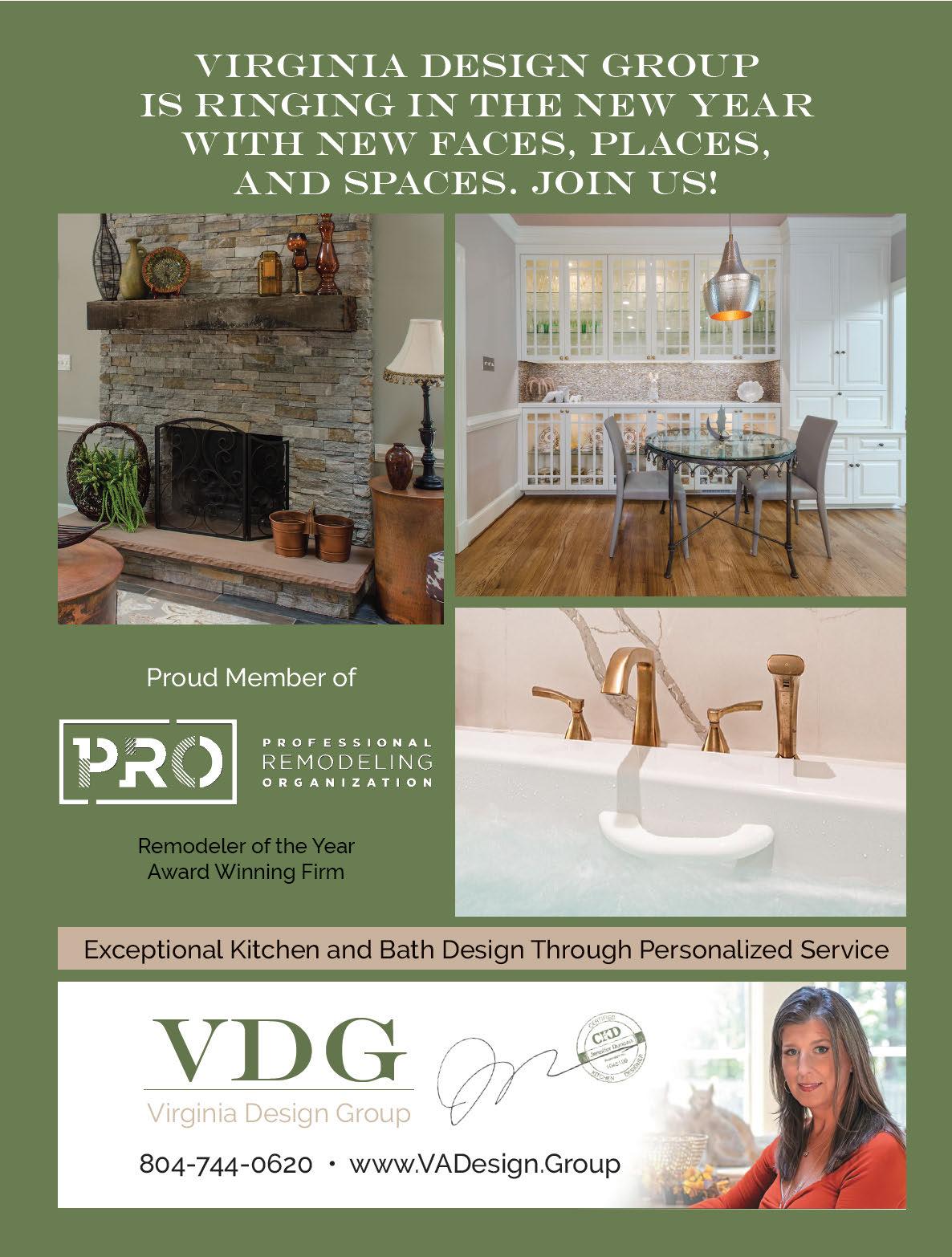

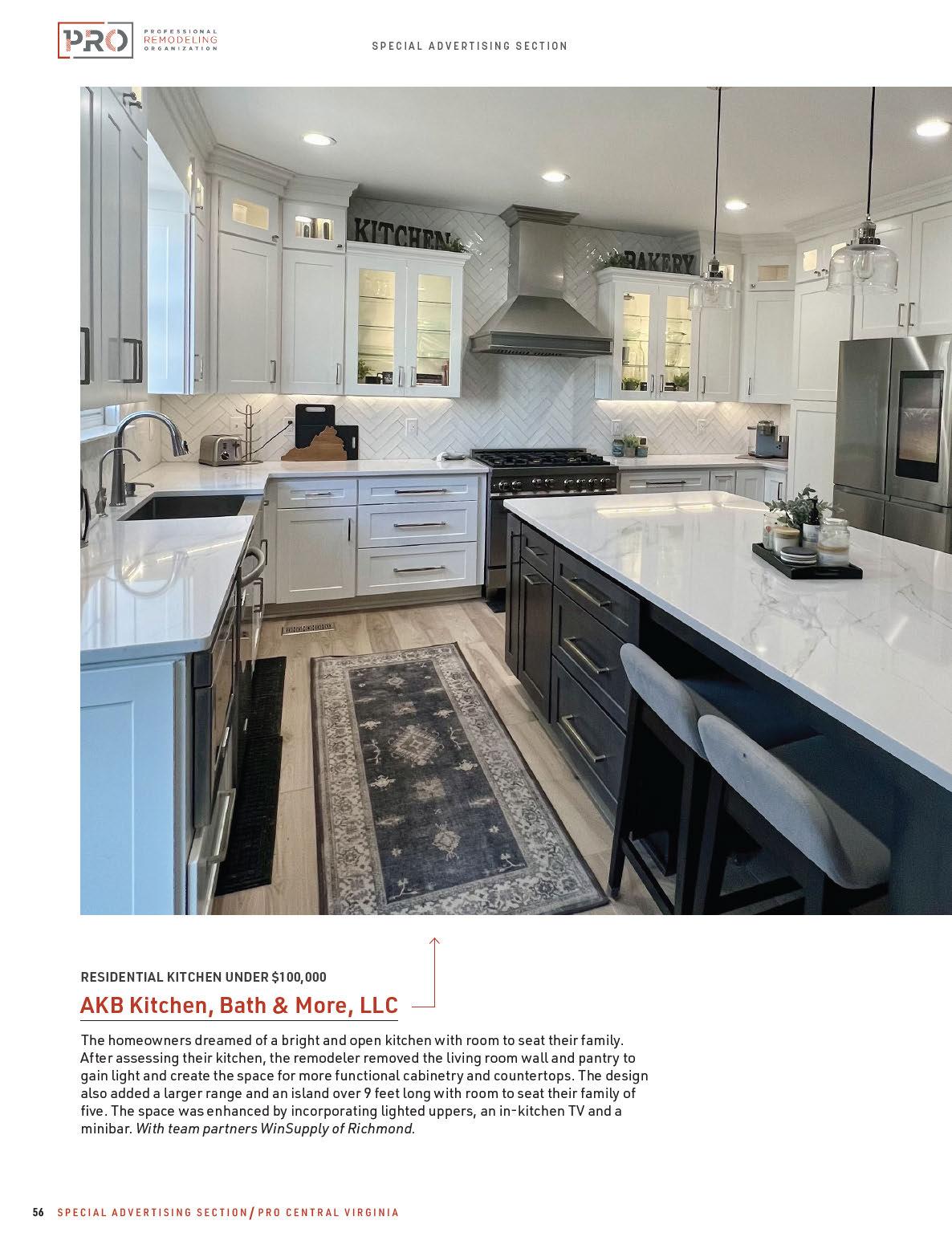


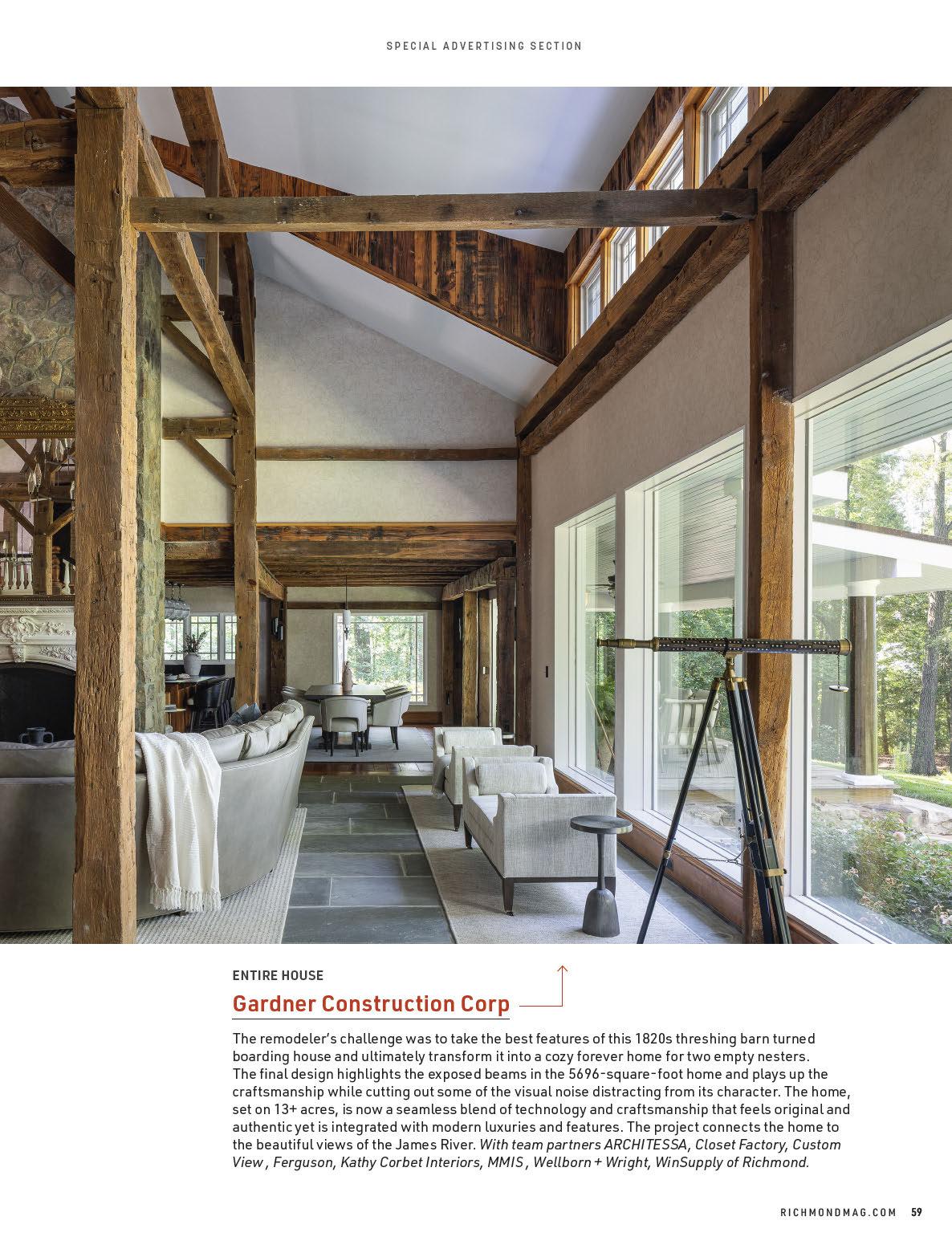


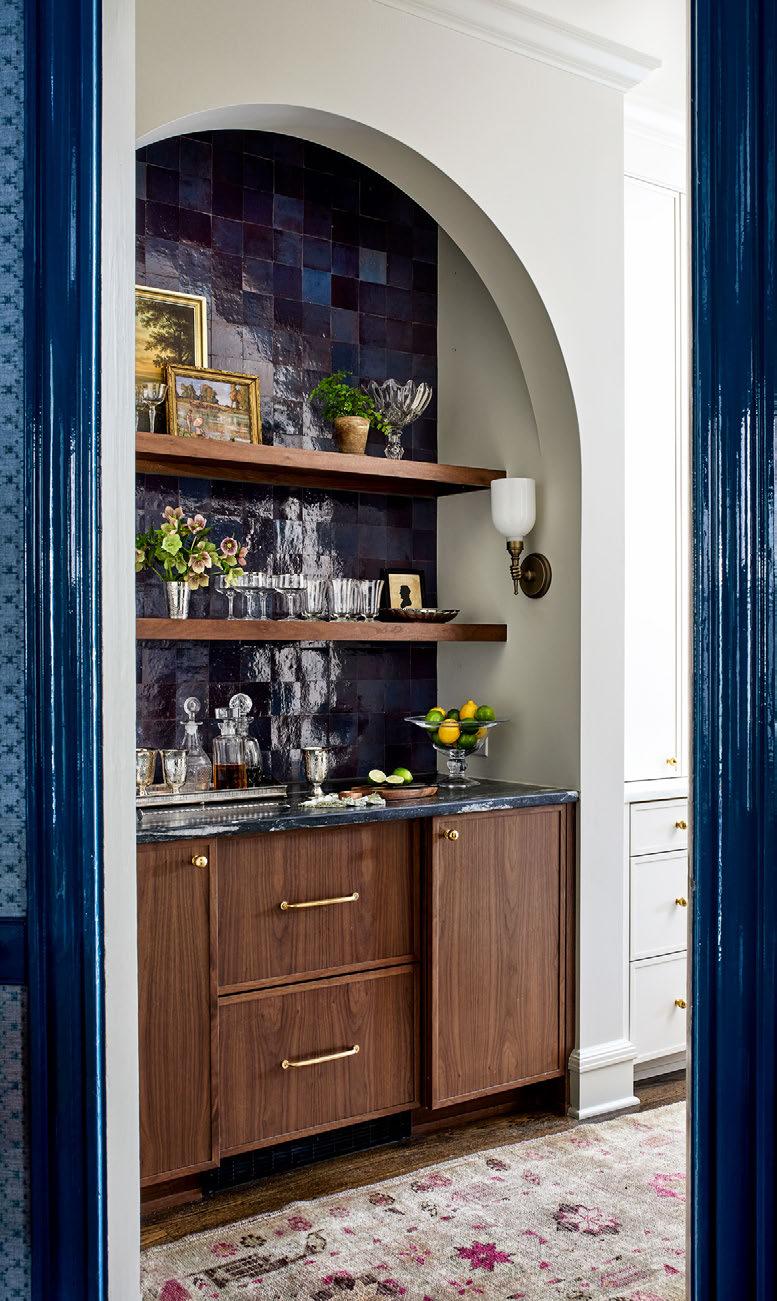
RESIDENTIAL KITCHEN OVER $200,000
Two entrepreneurs moved into this home with their two young children in 2021. They loved the neighborhood and the walks to preschool and dreamed of remodeling their kitchen. The 1990s kitchen did not belong in this classic 1920s home, nor did it accommodate their young family or weekend entertaining. Theremodeled space a highly functional kitchen for gourmet cooking with dedicated areas for a bar and drop zone, as well as improved storage. With team partners Ferguson, Anne Pulliam Interiors.
RESIDENTIAL INTERIOR
$150,000 AND OVER
The challenge: how to achieve a bar, mudroom, laundry and kitchen while working within the constraints of a historic home and tight lot lines. The answer was a combination of thoughtful design and careful craftsmanship. The result is nothing short of stunning. With team partners Ferguson, Anne Pulliam Interiors.
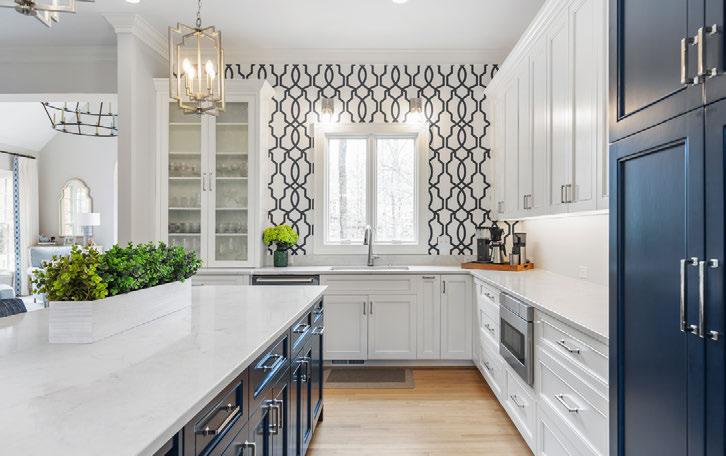
RESIDENTIAL KITCHEN
$100,000 - $200,000
Optimization was essential in the pursuit of a kitchen with multiple zones for cooking, prepping and eating alongside a central technology hub for studying. Larger, professional-grade appliances sit comfortably alongside custom cabinetry providing increased storage. With team partners Ferguson, Siewers Lumber & Millwork.





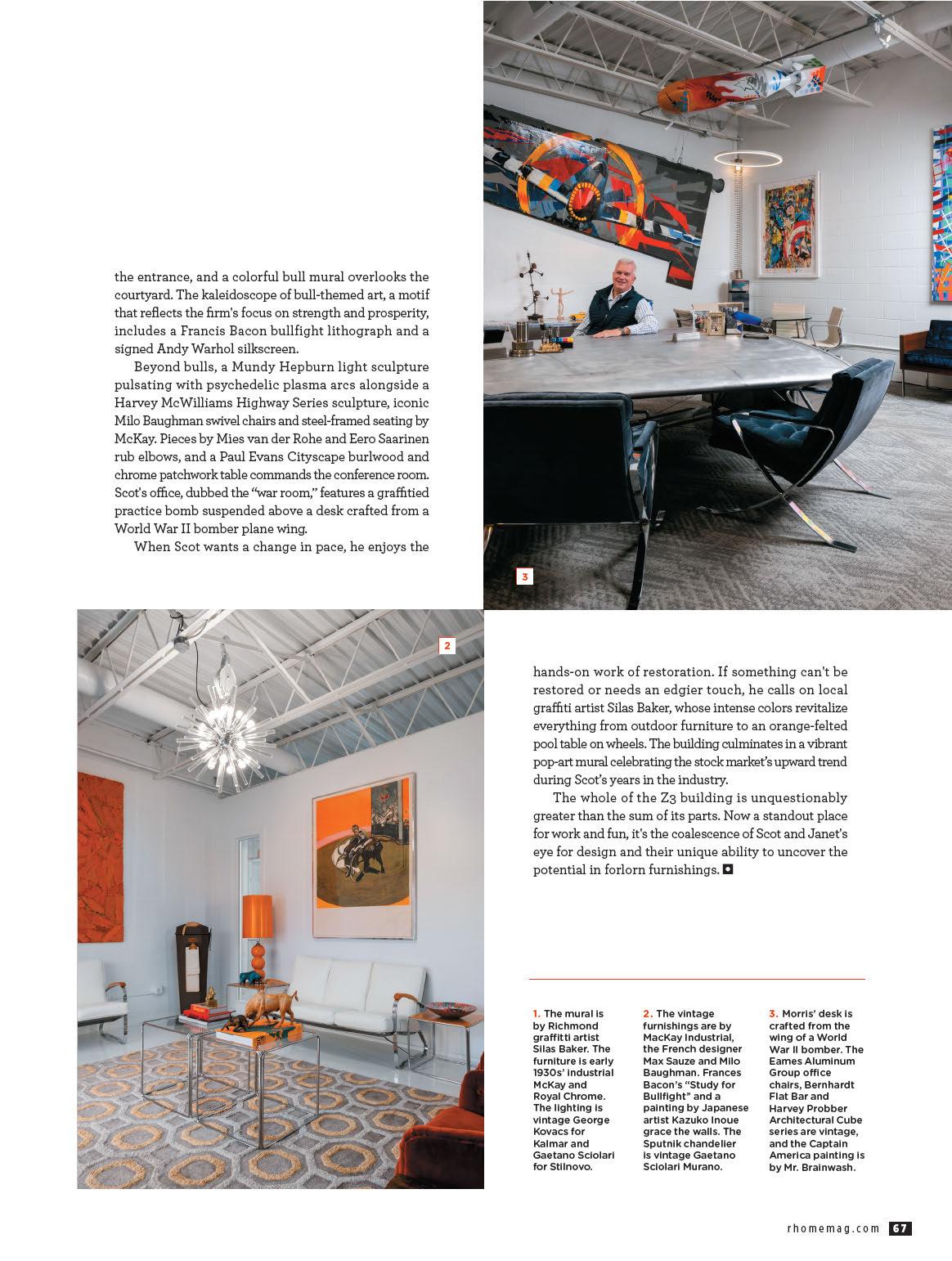






PERCHED HIGH ABOVE the banks of the Appomattox River in Hopewell, a Tudor Revival residence designed by Richmond architect Carl Lindner in 1929 channels the inherent charm of the style. The facade features a mix of common red bricks and clinkers — irregularly shaped bricks with the look of medieval English brick — in an elaborate patchwork of Flemish bond and other patterns, giving the house an ancient air. When Roland Peacock, an avid collector of Porsche automobiles, purchased the residence in the late 1980s, the only thing missing was a place to keep his cars. So, he designed a garage to match his house, framed it in with the help of some friends and found himself a mason willing to give the exterior a go. “As far as laying the brick, I said, ‘You copy what’s in the house or use your own imagination.’ He went with it and did a terrific job,” Peacock says. Key to their success was matching the clinkers, products of vintage beehive kilns that are no longer used. Tracking them down was no easy feat, according to Peacock, who found a batch in Maryland only after an extensive search. — Susan W. Morgan

